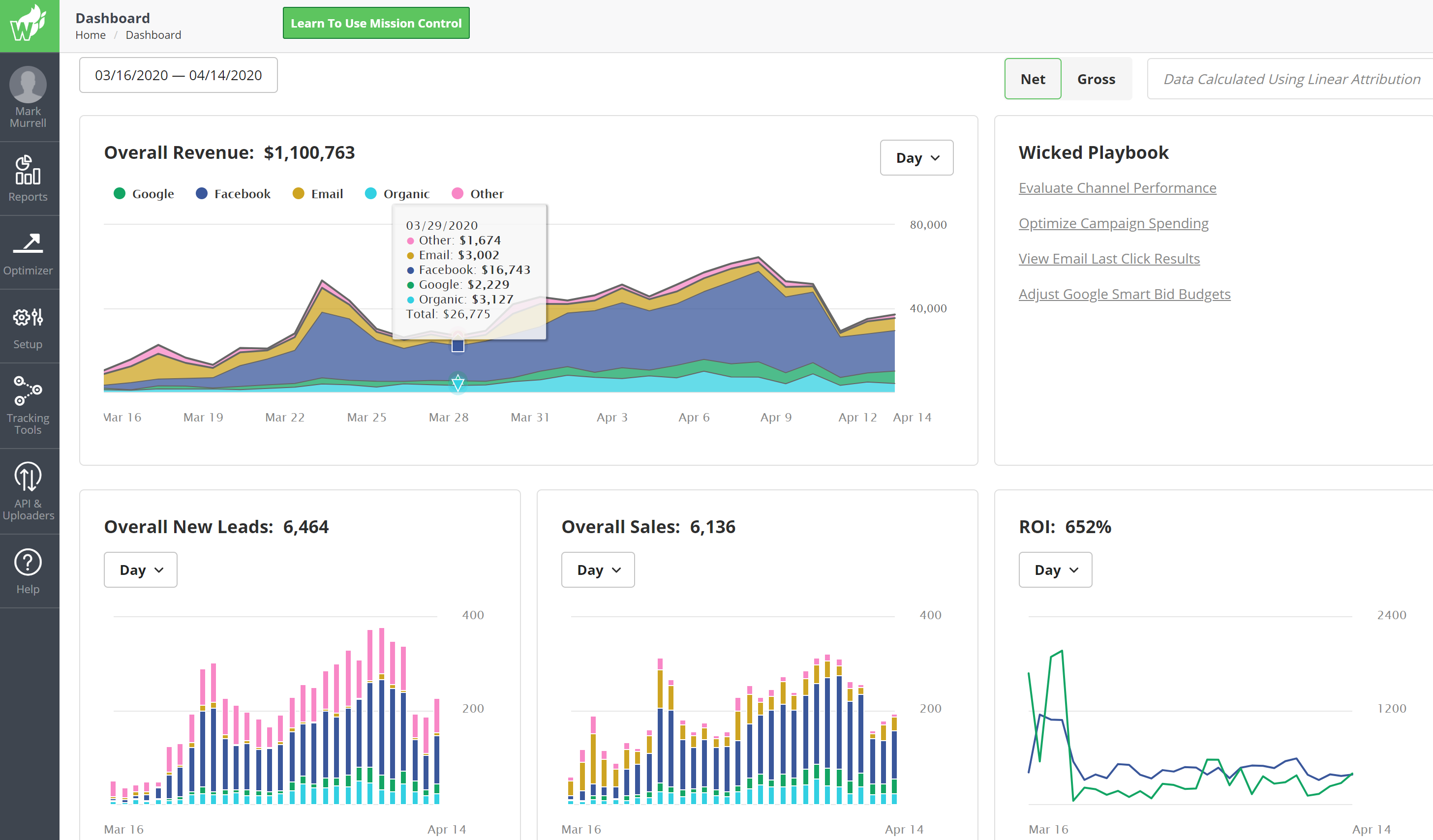
Wicked Reports: Complete Buyer's Guide
AI-driven attribution platform for e-commerce brands and marketing agencies
Wicked Reports positions itself as an AI-driven attribution platform specifically engineered for e-commerce brands and marketing agencies struggling with inaccurate attribution in cookie-deprecated environments. The platform differentiates through proprietary server-to-server tracking technology that bypasses browser-based limitations, targeting organizations managing multi-channel advertising campaigns with complex customer journeys[57][59].
Market Position & Maturity
Market Standing
Wicked Reports occupies a specialized mid-market segment between basic analytics tools and enterprise-level attribution platforms, competing effectively against general-purpose solutions through vertical-specific optimization while offering more accessible pricing than enterprise alternatives[51][52][57].
Company Maturity
Company maturity indicators include a transparent pricing structure with scalable tiers ranging from $250 introductory fees to $553/month for businesses with $3-10M revenue, demonstrating established commercial operations and market positioning[51][52].
Industry Recognition
Industry recognition emerges through documented customer success across multiple verticals, including e-commerce retailers like Get Maine Lobster, health and wellness brands like UMZU, and marketing agencies like Solutions 8, indicating broad market acceptance and proven capabilities[46][47][48][49].
Strategic Partnerships
The platform offers agency partnership opportunities with custom pricing based on client volume, including co-marketing benefits and dedicated Slack support, indicating mature channel partner programs[52].
Longevity Assessment
Strategic market position targets organizations experiencing significant revenue misattribution issues with existing tools and having dedicated technical resources for implementation[55][57][59].
Proof of Capabilities
Customer Evidence
Get Maine Lobster achieved $157,584 in sales from $16,972 ad spend within 90 days, representing a 263% Facebook ad ROI increase through Wicked Reports' AI attribution capabilities[48]. UMZU doubled annual revenue with 180% growth and achieved positive ad ROI within six months of implementation[46]. Solutions 8 marketing agency reduced new customer acquisition cost by 66% while scaling campaigns by 124%[47].
Market Validation
Customer adoption patterns span multiple industries including e-commerce retailers, health and wellness brands, and marketing agencies, indicating broad market applicability and proven implementation success[46][47][48][49].
AI Technology
Wicked Reports' AI technology core operates through the "Wicked Coach" system that analyzes multiple data points per click using server-to-server tracking and first-party data conversions[58][59].
Architecture
Technical architecture centers on server-side tracking via Conversions API (CAPI) implementation, requiring organizations to implement server-to-server event forwarding to bypass browser-based limitations[59].
Primary Competitors
Competitors like Hyros and Triple Whale.
Competitive Advantages
Primary competitive advantages center on Wicked Reports' server-to-server tracking architecture that avoids browser-dependent fragility affecting competitors like Hyros[56][59]. The platform's Advanced Rules automation capability provides autonomous optimization that Triple Whale lacks[53].
Market Positioning
Market positioning places Wicked Reports in the specialized mid-market segment between basic analytics tools and enterprise-level attribution platforms[51][52][57].
Win/Loss Scenarios
Win scenarios favor Wicked Reports for organizations with complex multi-touch customer journeys, existing CRM systems requiring integration, and sufficient technical resources for proper implementation[46][48][51].
Key Features

Pros & Cons
Use Cases
Integrations
Pricing
Featured In Articles
Comprehensive analysis of AI Conversion Tracking for AI Marketing & Advertising for AI Marketing & Advertising professionals. Expert evaluation of features, pricing, and implementation.
How We Researched This Guide
About This Guide: This comprehensive analysis is based on extensive competitive intelligence and real-world implementation data from leading AI vendors. StayModern updates this guide quarterly to reflect market developments and vendor performance changes.
59+ verified sources per analysis including official documentation, customer reviews, analyst reports, and industry publications.
- • Vendor documentation & whitepapers
- • Customer testimonials & case studies
- • Third-party analyst assessments
- • Industry benchmarking reports
Standardized assessment framework across 8 key dimensions for objective comparison.
- • Technology capabilities & architecture
- • Market position & customer evidence
- • Implementation experience & support
- • Pricing value & competitive position
Research is refreshed every 90 days to capture market changes and new vendor capabilities.
- • New product releases & features
- • Market positioning changes
- • Customer feedback integration
- • Competitive landscape shifts
Every claim is source-linked with direct citations to original materials for verification.
- • Clickable citation links
- • Original source attribution
- • Date stamps for currency
- • Quality score validation
Analysis follows systematic research protocols with consistent evaluation frameworks.
- • Standardized assessment criteria
- • Multi-source verification process
- • Consistent evaluation methodology
- • Quality assurance protocols
Buyer-focused analysis with transparent methodology and factual accuracy commitment.
- • Objective comparative analysis
- • Transparent research methodology
- • Factual accuracy commitment
- • Continuous quality improvement
Quality Commitment: If you find any inaccuracies in our analysis on this page, please contact us at research@staymodern.ai. We're committed to maintaining the highest standards of research integrity and will investigate and correct any issues promptly.